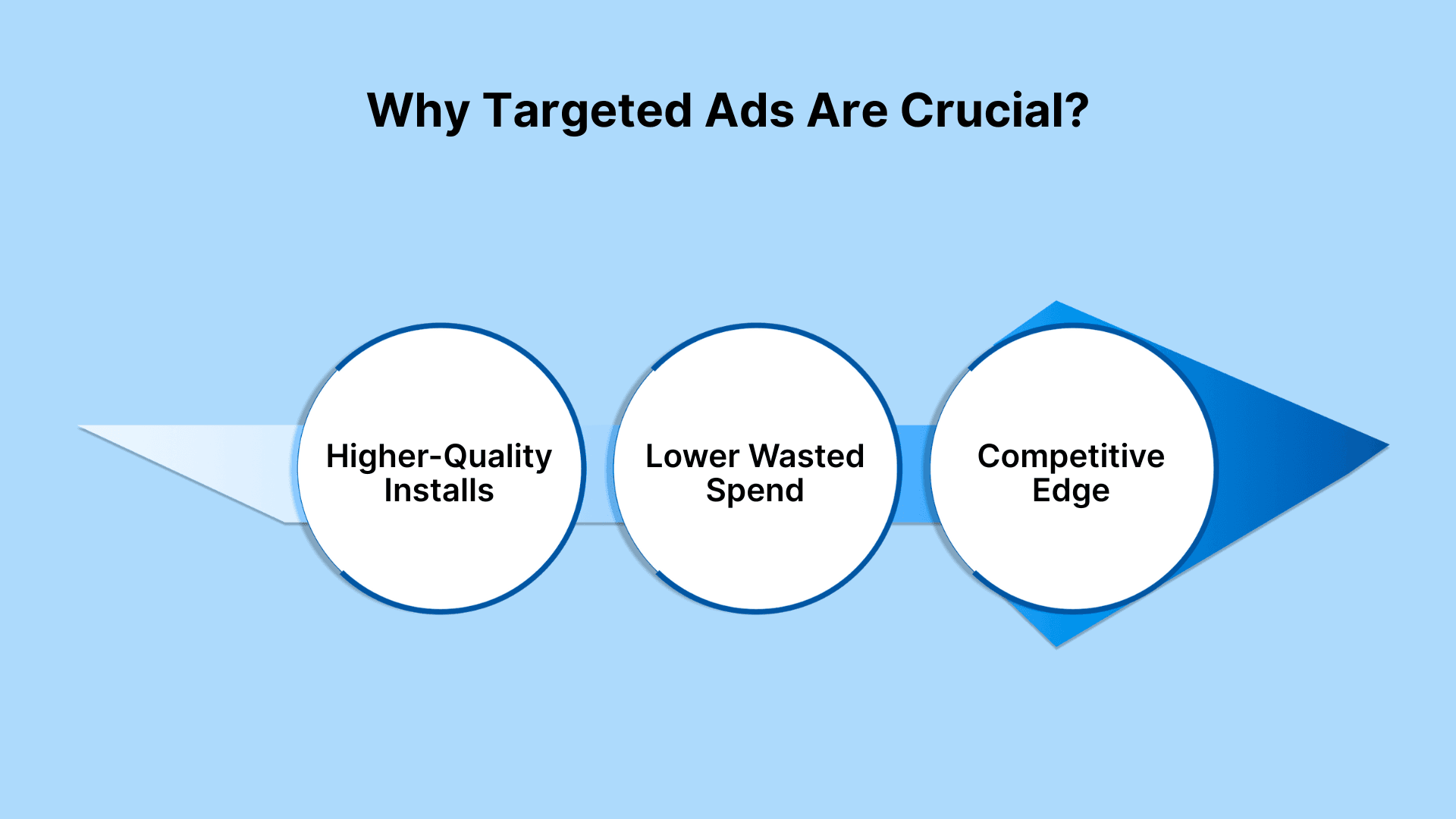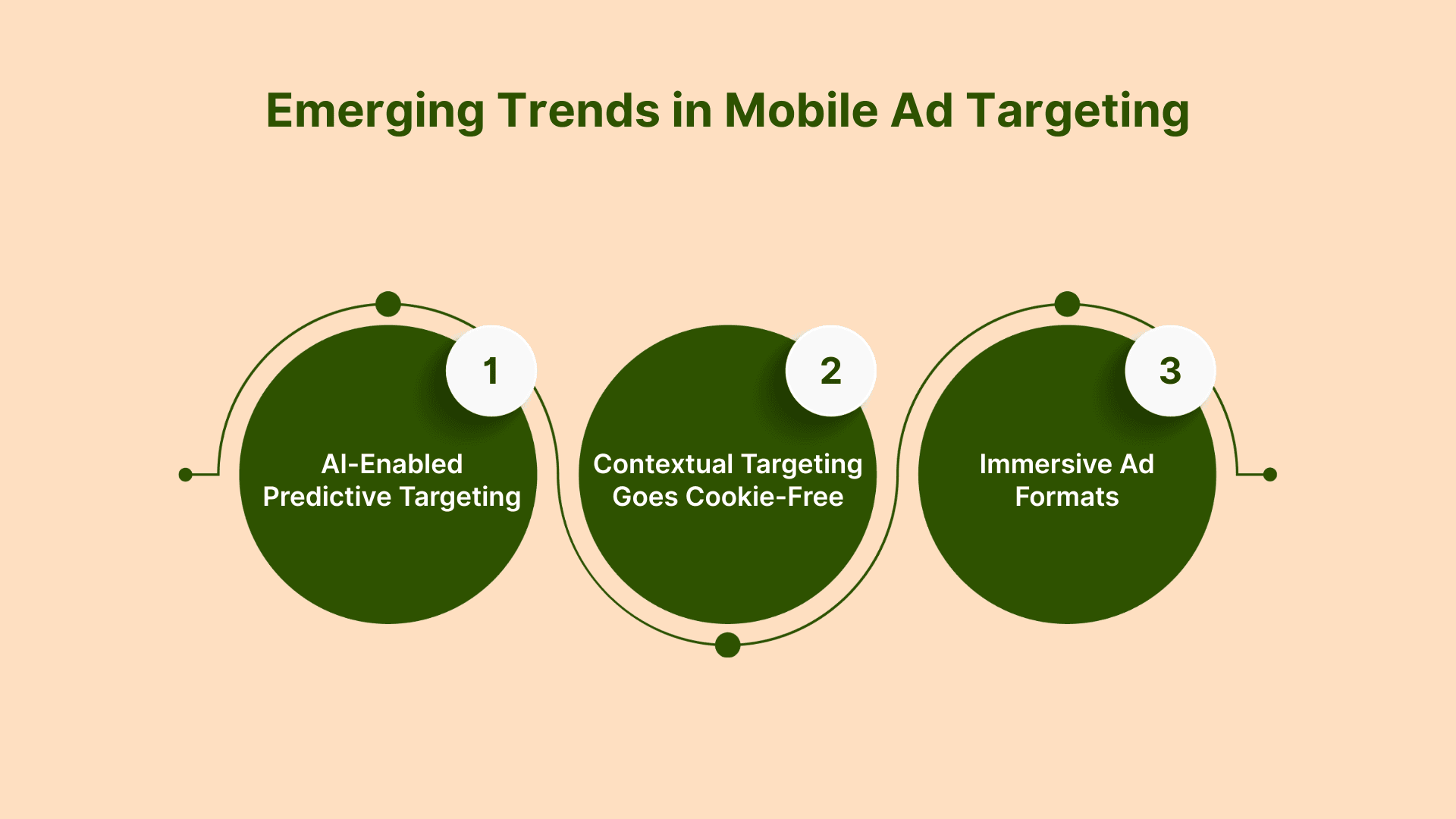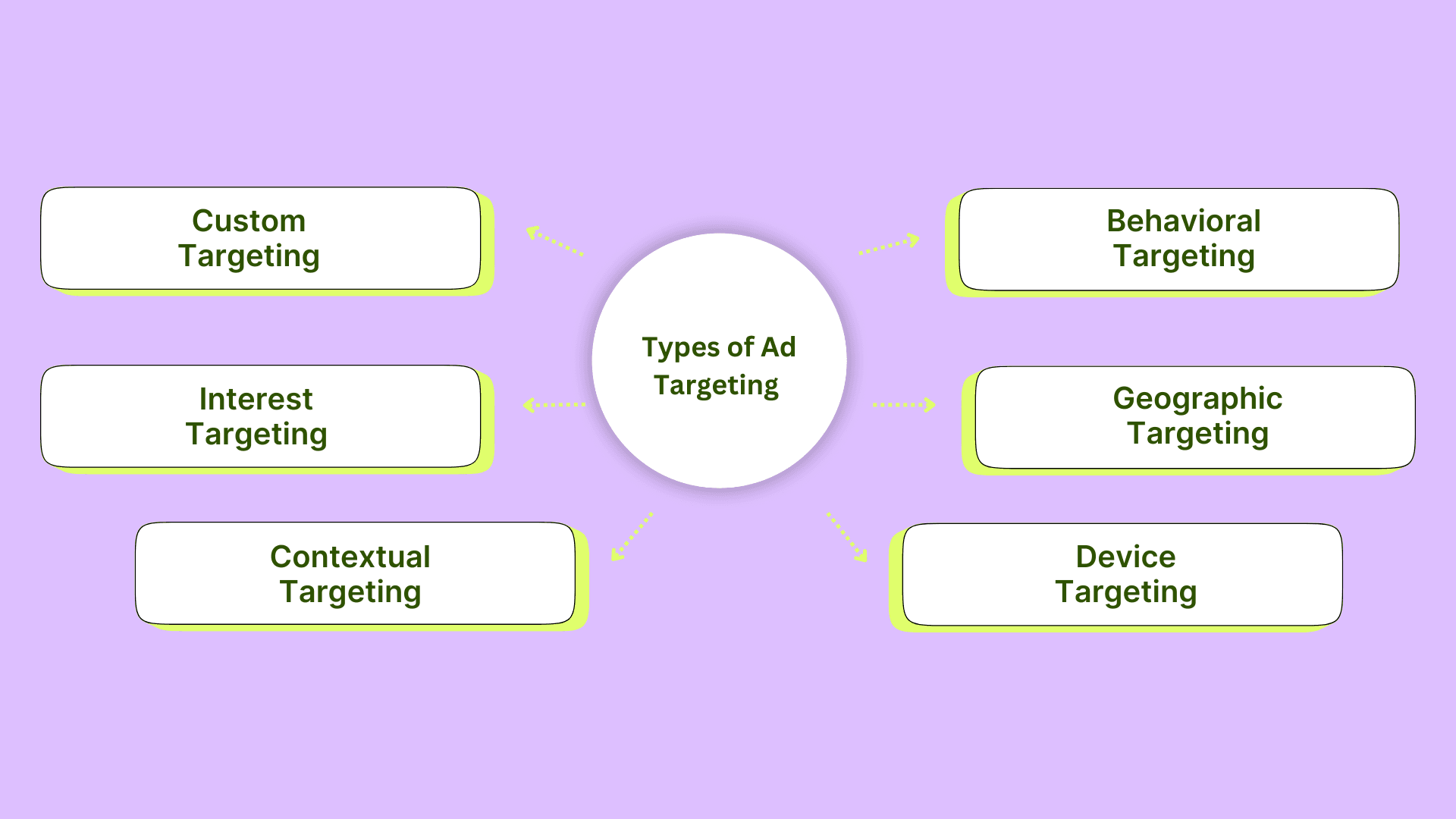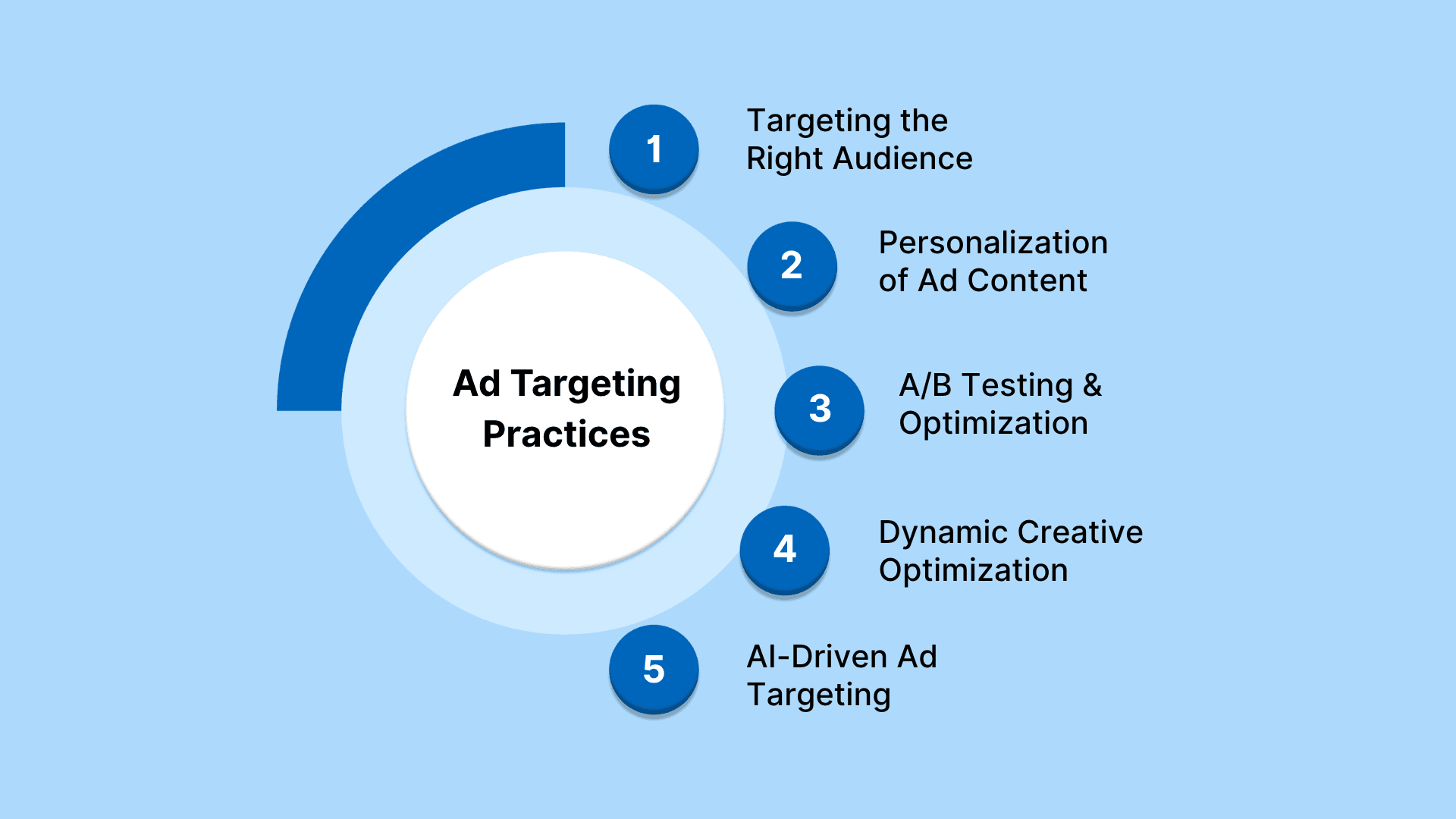Mobile Ad Targeting Best Practices for 2025
Simply casting a wide net with your ads is no longer enough. With millions of games competing for attention, effective targeting is essential to stand out and grow your user base. Effective ad targeting ensures your game reaches players who are most likely to engage, play, and become loyal users.
This approach not only maximizes your return on ad spend but also builds a community around your game. Are you also facing challenges in acquiring high-quality users? Struggling with ad fatigue or irrelevant impressions?
This blog covers the best practices in mobile game ad targeting for 2025. We'll explore various targeting strategies, their benefits, and how to implement them effectively to attract the right players to your game.
Why Targeted Ads Are Crucial for Mobile Games
In mobile gaming, attracting the right players is more challenging. Targeted advertising has become crucial for game developers seeking to expand their user base effectively. It is not just about reaching more users; it's about reaching the right users.
By implementing effective targeting strategies, you can optimize your user acquisition efforts, ensuring sustainable growth and success in the mobile gaming industry. Here's why:

Higher-Quality Installs: With targeted advertising, you can reach players who are more likely to engage with your game, resulting in higher-quality installs. This means your acquisition efforts yield users who are not only more likely to install the game but also to become active and long-term players.
Lower Wasted Spend: Targeted ads reduce the inefficiencies of broad-spectrum advertising. By focusing on specific user segments, you ensure that your ad budget is spent on reaching individuals who have a higher propensity to install and engage with your game, thereby lowering the cost per acquisition.
Competitive Edge: In a saturated market, standing out is crucial. Targeted advertising enables you to deliver personalized messages to potential players, thereby increasing the likelihood of attracting users who resonate with your game's unique offerings and giving you a competitive edge.
To stay ahead, it's essential to adapt to the latest developments in mobile ad targeting. Let's explore the most recent emerging trends.
Emerging Trends in Mobile Ad Targeting for 2025
Mobile gaming ad targeting is shifting towards AI-driven personalization, allowing developers to deliver highly relevant ads based on player behavior and preferences. With advancements in machine learning, hyper-targeted campaigns are becoming the norm, ensuring ads reach the right players at the right time.
Here are the key emerging trends shaping mobile gaming ad targeting:

1. AI-Enabled Programmatic & Predictive Targeting
Now, Demand-Side Platforms (DSPs) will use neural networks to handle bidding, detect fraud, and predict future player lifetime value (LTV). These systems not only bid smarter based on user behavior they also forecast which users are likely to stay engaged after installation.
For example, DSPs like Viant AI and RTB House analyze millions of signals (such as time of day, device, and session patterns) to dynamically adjust bids within milliseconds, helping you win at the right moments and avoid low-value installs.
Why it matters for you:
Cuts wasted spend by avoiding low-value installs
Automatically optimizes bids based on predicted player quality
Detects and prevents bot-driven or fraudulent traffic
2. Contextual Targeting Goes Cookie-Free
With privacy regulations limiting third-party cookies, contextual targeting has advanced beyond simple keyword matching. Modern systems utilize AI, NLP, and image recognition to place your ads alongside relevant content, eliminating the need for tracking. That means your ad for a space shooter can appear in a sci-fi news feed or gaming review app right when interest is peaking.
Why it matters for you:
More relevant placements and +25–63% higher user intent
Privacy-safe reach, no need for personal tracking
Better brand safety and compliance with ATT/GDPR
3. Immersive Ad Formats
2025 is ushering in richer ad formats that engage users before they even open your game. These include:
Snackable videos: Short, 6–15 second trailers shared via social feeds.
Playable previews: Mini interactive demos outside your app, users get a taste of gameplay before downloading.
Transform your existing MP4 video ads into interactive HTML5 playable ads with Segwise's free video-to-playable ad converter. Simply upload your video, and the tool generates a playable ad embed code compatible with AppLovin and Mintegral platforms. No coding skills required, just drag and drop your video to get started.
Why it matters for you:
Grabs attention with high-fidelity creative before install
Filters users who already “play” the game virtually
Boosts conversion as it aligns with user activity on social platforms
As mobile ad targeting continues to evolve, understanding the different types available is crucial for optimizing your campaigns.
Also Read: What is a Demand-Side Platform (DSP)? A Complete Guide
Various Types of Ad Targeting
Ad targeting can be broadly categorized into several types, each focusing on different aspects of user behavior and demographics. From demographic and behavioral targeting to contextual and geo-targeting, each method helps marketers reach the most relevant audience with precision.
Here are the key types of ad targeting to consider for your campaigns:

1. Behavioral Targeting
Behavioral targeting utilizes data on how people interact with apps to predict which users are most likely to install and enjoy your game. It analyzes patterns (e.g., frequent play of a particular game) and devices to identify high-value player profiles. By focusing on users who have demonstrated interest in similar games or genres, you can attract players more likely to install and engage with your game.
Example: If a user frequently plays puzzle games, targeting them with ads for your new puzzle game increases the likelihood of conversion.
2. Geographic Targeting
Geographic targeting delivers ads based on a user's physical location, utilizing GPS data or IP addresses to pinpoint their precise location. Certain games may appeal more to users in specific regions due to cultural preferences or language. Tailoring your ads to these regions can enhance relevance and engagement.
Example: Promoting a cricket-themed game more heavily in India, where cricket is widely popular, can lead to higher user acquisition rates.
3. Device Targeting
Device targeting focuses on delivering ads to users based on their device type, operating system, or specific device models. This ensures compatibility between your game and the user's device, preventing issues and enhancing the user experience, which in turn leads to higher installation rates.
Example: Targeting users with high-performance smartphones for graphically intensive games ensures smoother gameplay and better user satisfaction.
4. Contextual Targeting
Contextual targeting involves placing ads based on the content the user is currently engaging with rather than their data.By aligning your ads with the user's current interests or activities, you can increase the relevance and effectiveness of your campaigns.
Example: Displaying an ad for a racing game to a user reading an article about car racing.
5. Interest Targeting
Interest targeting delivers ads to users based on their expressed interests, hobbies, or past activities. Targeting users with interests aligned with your game's theme, creatives can attract players who are more likely to enjoy and engage with your game.
Example: Promoting a fantasy RPG game to users who have shown interest in fantasy literature or movies.
6. Custom Targeting
Custom targeting enables you to create specific audience segments based on a combination of factors, including demographics, behaviors, and interests. This approach enables you to tailor your ads to specific user groups, thereby improving relevance and conversion rates.
Example: Targeting users aged 18-24 who have previously installed similar games and are located in urban areas.
To ensure your ad campaigns not only reach the right players but also drive optimal results, it's crucial to implement the best targeting practices.
Best Ad Targeting Practices For User Acquisition
Effective ad targeting is key to acquiring high-quality users in mobile gaming. By leveraging AI-driven segmentation, personalization, and continuous optimization, you can ensure your ads reach the right players at the right time.
Here are the best ad targeting practices for successful user acquisition:

1. Segmentation and Targeting the Right Audience
Segmentation involves dividing your potential player base into distinct groups based on shared characteristics such as demographics, behavior, and preferences. Effective targeting ensures your ads reach the most relevant users, maximizing the likelihood of installs.
With the implementation of Apple's App Tracking Transparency (ATT) and Google's Privacy Sandbox, traditional methods of user tracking have become less effective. Marketers are now leveraging contextual targeting, predictive modeling, and consent-based tracking to reach their audiences effectively.
Best Practices:
Behavioral Clustering: Behavioral clustering uses data analytics and machine learning to identify patterns in user behavior and group individuals with similar characteristics. This enables advertisers to target specific user segments with tailored ads that are more likely to resonate with their interests and needs.
Lookalike Audiences: Develop lookalike audiences by identifying patterns in high-value users and targeting new users who exhibit similar behaviors and characteristics.
Cross-Platform Consistency: Ensure your segmentation strategy is consistent across different platforms and devices to maintain a unified user experience.
Dynamic Segmentation: Regularly update your segments based on new data to adapt to changing player behaviors and market trends.
Effective segmentation and targeting enable you to allocate your marketing resources more efficiently, thereby reducing the cost per install (CPI) and increasing the lifetime value (LTV) of acquired players. By reaching the right audience with personalized messages, you enhance the chances of attracting engaged and valuable users.
Tip: To implement these advanced targeting strategies, consider integrating AI-powered tools and platforms that offer predictive analytics and behavioral clustering. Regularly analyze your campaign performance to refine your segments and ensure optimal targeting.
2. Relevance and Personalization of Ad Content
Relevance and personalization in mobile game advertising involve tailoring your ad content to align with the preferences of your target audience. This approach ensures that your ads resonate with users, increasing the likelihood of engagement and conversion.
Mobile game advertising has undergone significant evolution due to advancements in artificial intelligence (AI) and machine learning. These technologies enable advertisers to create highly personalized ad experiences by analyzing vast amounts of user data, including gameplay behavior, preferences, and interactions. This shift enables more precise targeting and increased ad relevance.
Best Practices:
Leverage First-Party Data: Collect and analyze data directly from your users to gain insights into their preferences and behaviors, ensuring that your ads are tailored to their interests.
Implement Contextual Targeting: Focus on delivering ads based on the context in which the user is engaging, such as the type of game they are playing or their current game activity, to enhance relevance and improve user experience.
Test and Optimize Ad Formats: Experiment with various ad formats, such as interactive and playable ads, to determine which ones resonate best with your audience and drive the desired outcomes.
3. A/B Testing and Continuous Optimization
A/B testing, also known as split testing, involves comparing two versions of a marketing asset, such as an ad creative or call-to-action, to determine which one performs better in terms of user acquisition (UA) metrics, including click-through rates (CTR), conversion rates, and cost per install (CPI).
Mobile gaming user acquisition has evolved with advancements in artificial intelligence (AI), enabling more sophisticated A/B testing and optimization strategies. AI-powered platforms now allow ad creatives to be dynamically adjusted based on user behavior and engagement patterns. This approach ensures that the most effective creatives are served to the right audience segments at the optimal time, leading to improved user acquisition outcomes.
4. Dynamic Creative Optimization (DCO)
Dynamic Creative Optimization (DCO) is an advanced advertising technique that allows for the personalization of ad creatives based on user data and contextual information. In the context of mobile gaming, DCO enables advertisers to tailor ad elements, such as images, videos, headlines, and calls to action, to users, thereby enhancing relevance and engagement.
DCO has undergone significant evolution, driven by advancements in artificial intelligence (AI), machine learning, and data analytics. The increasing adoption of 5G technology has further enhanced the capabilities of DCO, allowing for the delivery of high-quality, interactive ad experiences. These developments have led to more sophisticated personalization, enabling advertisers to deliver highly targeted and engaging ad experiences to users.
5. AI-Driven Programmatic Ad Targeting
AI-driven programmatic advertising automates the placement of digital ads using data and machine learning algorithms. In mobile gaming, this approach enables you to deliver personalized ads to potential players at the optimal moment, thereby enhancing the likelihood of installs and engagement.
AI has become integral to programmatic advertising, particularly in the mobile gaming sector. Advancements in machine learning enable more precise targeting and proactive optimization of ad campaigns. For instance, AI can now predict which users are most likely to install your game based on their behavior patterns and interactions with similar games. This shift provides more effective audience insights to enhance ad targeting.
Also Read: Creative Optimization in 2025: Dynamic Creative Optimization (DCO) Playbook for Mobile UA
Conclusion
Effective mobile game ad targeting is essential for reaching the right players. Strategies such as AI-driven programmatic targeting, contextual targeting, and dynamic creative optimization help maximize return on ad spend and reduce inefficiencies. By leveraging these advanced techniques, developers can enhance user acquisition, lower costs, and foster sustained growth in a competitive market.
To enhance your strategy, consider Segwise, an AI-powered platform designed to optimize ad performance for mobile games. Segwise's AI Creative Agent automatically tags visual, text, audio, and other elements across all ad creatives, eliminating the need for manual tagging. Segwise's custom dashboarding feature aggregates creative data from multiple ad networks, providing insights into top-performing assets and effective tag combinations specific to geographies and networks.
So, do you want to optimize your ad creatives and boost your game's performance? Start your 14-day free trial today to simplify your creative analytics and enhance your return on ad spend.
FAQs
1. How can geographic targeting enhance my ad campaigns?
Geographic targeting allows you to deliver ads based on a user's physical location, utilizing GPS data or IP addresses. Tailoring your ads to specific regions can enhance relevance and engagement, especially if your game appeals more to users in certain areas due to cultural preferences or language.
2. How can dynamic creative optimization (DCO improve my ad performance?
DCO allows for the personalization of ad creatives based on user data and contextual information. This approach ensures that your ads resonate with users, increasing the likelihood of engagement and conversion.
3. What are the top advertising networks for mobile gaming?
Leading platforms include Unity Ads, AppLovin, and Chartboost. These networks offer advanced targeting capabilities, seamless integration, and support for various ad formats like playable and rewarded video ads, catering specifically to mobile game developers.

Comments
Your comment has been submitted successfully!